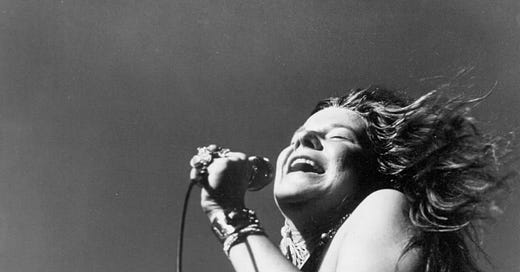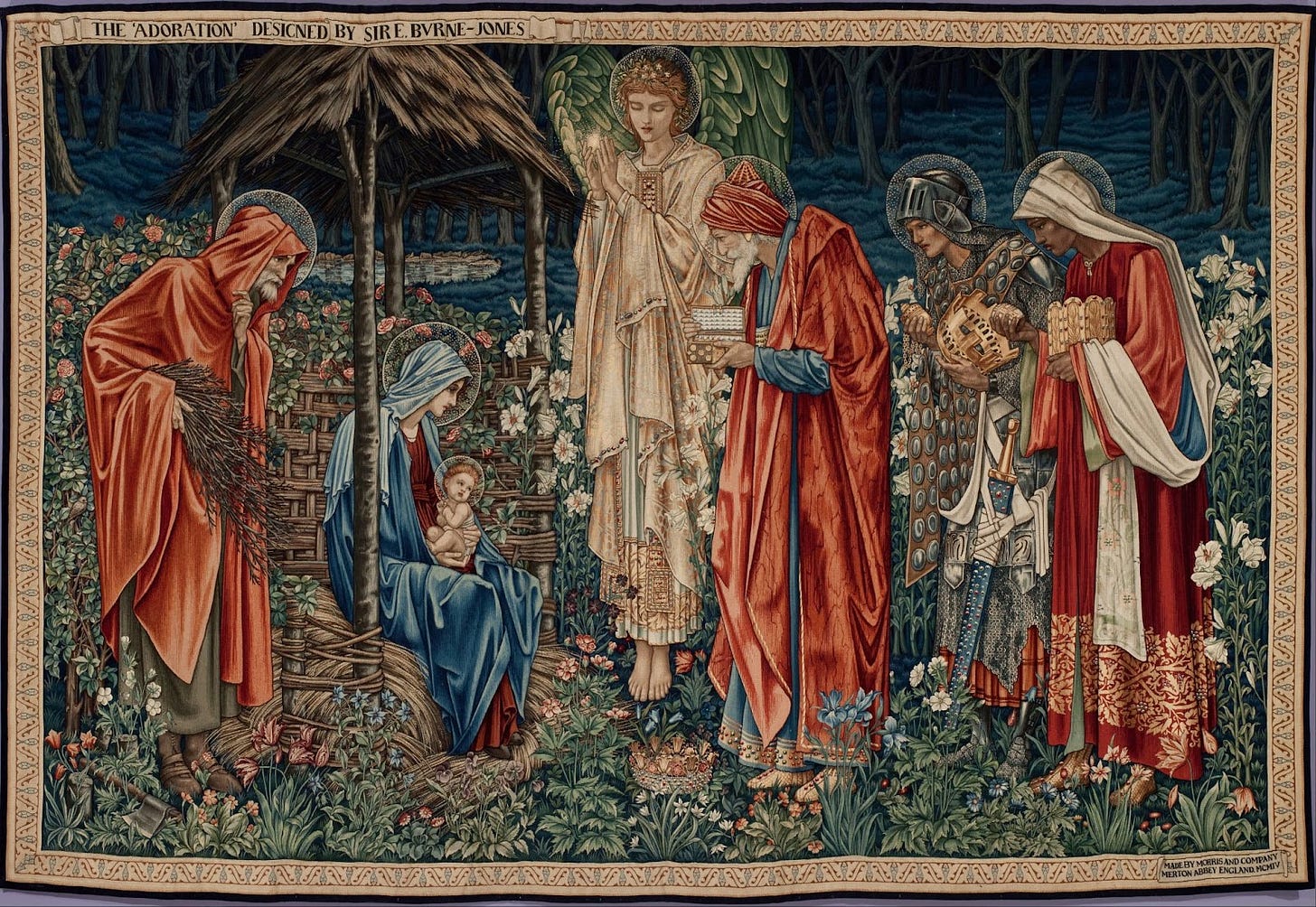the smashing of cymbals and drums
Collective effervescence, the joy of wassailing, and the vibrations of the planets.
I remember in my darkest days of teenage angst, having a deep respect for anyone who could bear their musical soul completely by letting it all come out through voice, whether it be a rock and roll scream or a painful and powerful expression of sadness and longing (all perfectly captured in the way Janis Joplin sings Piece of my Heart ). You can feel it, you can tell when nothing is held back, there is a vibration to it that communicates directly, the body electric, and you do not need to know language or notes, you just need to be human and to have lived in order to recognize it, it comes in sound waves. Joe Cocker, Otis Redding, Aretha Franklin, all masters in this craft.
There is a book I seem to buy over and over and hand it out to people, David Byrne's How Music Works. David knows music, he was in the Talking Heads, has had a wonderfully successful career in music making, and the way he writes about music is remarkable. He writes about vibrations made and how they are recorded, how, when things became digitized, this created a layer of filtered vibrations, and a translation of sounds resulting in lost depth. Recording on a vinyl record was a process where the vibrations of the voice or instruments would cause a recording needle to move and cut the new vinyl in the pattern of those exact vibrations, the same way a hand moves a paint brush on a canvas.
When computers became involved in recording, this process shifted. Computers, instead, translate the musical vibrations into a series of 0’s and 1’s which can be stored and sent and then inform the receiving machine how to make something that sounds like the original noise, like showing a polaroid of the painting. If you zoom in on an old CD you can see the binary code. It is a translation of vibrations. Itzhak Perlman pulls the bow across the strings of his violin, which vibrate and create a sound, this sound moves through the air to a cone which funnels down the vibrations to a needle that moves and slices the fresh new vinyl. Later you can take a needle and move the vinyl in the opposite direction, and those grooves will vibrate the same to make the noise of his violin. It is much more complicated but this is a reduced way to put it. Digitally, computers translate the vibrations into binary code, the language used in computations, 0’s and 1’s, and mp3 players translate that code back into vibrations which sound like the original. Through both of these processes, some things get lost from the original vibrations Itzhak created, depth of sound, richness to varying degrees. There is nothing quiet like live music and sounds to translate some larger emotive expression. This is what I really want to get to, vibrations.
A few nights ago I was standing in a modest kitchen room in the west end of Toronto that should not have been able to, but probably held about 60 people, all with voices raised, drinks in hand, singing in unison, in an act called wassailing. Pagan roots with harvest rituals, wassailing is an act of celebration usually held on the 12th night of Christmas, the eve of the Epiphany. This isn’t a religious ceremony though, it is a party, it is like bacchanalia or carnival or Mardi Gras, and is related to each of those in different ways. It is a ceremonial party with old roots. The room vibrated to each note sung, the rafters slightly shook, and all undulated. It was religious, some cried whilst singing, not for the lyrics, but simply because of the act, the connective vibrations. It was beautiful (a recording of us singing is below). I know this sounds out-there and fictional, but there are literal connections happening in these moments, notes in harmony, entwined, connected to throats and vocal chords, to chests and heart beats, a collective effervescence. There is science to this. In collective spaces like live music shows, or parades, or church, participants heart rates, cortisol, breathing patterns, all start to meld together into one collective rhythm. Groups of people measured prior to events like this all have separate measurements of cortisol levels, heart rates, etc, and after a concert, a march, some sort of collective human celebration, all of these measurements are in sync. We can feel this exultation, and have felt it, more in our youth when we spend more time unconsciously seeking it out, at a concert, listening to the great speech makers, our neurological systems start to affect each other. It is what the poets call awe.
When I was a child I learned that if you sang a certain note in a bathtub the room would vibrate and hum. Only certain notes would work for certain places, as if the room held its own chord. I taught this to my kids and I hear them now from time to time trying to find the note in the shower, the one that makes the room buzz.
In the springtime in Ontario you can find large swarms of gnats that hover in sun spots, and when you sing different notes the swarm moves and changes shape depending on the song, the tune, the note. The males have special organs at the base of their antennae that can detect wing frequency; the vibrations of the female’s wing. When we sing or whistle, and if we hit the right notes, the swarm will move as if called or directed. The group becomes fluid in motion, coordinated through lateral vibrations of song.
Dance and motion have a similar effects on us. A few weeks ago I was in New York and I was heading to the Jackson Heights–Roosevelt Avenue/74th Street station in Queens to meet a friend of a friend who is a community leader of sorts, or more aptly described as a community translator; she grew up there and was showing me into a world that is a slice of the Sherpa Community, a large slice, the largest Sherpa community in the world outside of Nepal. This neighborhood, this area of NYC, had been a place I had wanted to see for some time as it connected through very real cultural tunnels to places like Kathmandu, the Kingdom of Mustang, and the Khanate of Bukhara. You really can find a lot of the world in Queens.
The transfer from 59 street and Park Ave to Queens is a long one in comparison to other stops in the subterranean tunnel system that is the NYC Subway, but it is really only a few minutes. As a child I would walk off the trails in the woods behind my house following my pet dogs, and in doing so, would find new landscapes, new worlds in the geography, small dark woods that would feel different from just a few hundred yards away. I remember learning that landscape connects, somewhere, somehow, to emotions, and that small steps could be worlds apart, that I would feel different in different parts of the wood. Sometimes joy, sometimes fear, sometimes sadness. Looking through these eyes the NYC subway system turns into hyperspace tunneling, under river and stone, from one universe into another like some interstellar journey.
The ride took me from Park Avenue to Elmhurst, two very different parts of one large city. For a few hours that night I was in the Himalaya, a part of it, and I mean this in a very real way. I know those mountains and that part of the world, I am drawn to it, not in some mountaineering conquering way, just the layers of language and culture in each ravine and valley. I know it when I see it and I felt it and saw it in Elmhurst that night.
I walked into Moore Homestead Playground at Broadway and Elmhurst to a dance. A circle dance, like a line dance, called a Gorshey in Tibetan. There were grandparents, teenagers, young professionals, camera crews for tik-tok feeds. Some were in jeans and some in chubas (a traditional Tibetan robe), and many were dancing matching motions in a circle slowly spinning in the middle of the park. I joined in and followed the motions and moved in sync.
In 2008 there were active resistance movements in the Tibetan community, an uprising in Tibet, which led to arrests and violence in Lhasa and other places, and a further divide in a long standing frictionfull relationship of people and place in Tibet and in China. Inspired by Mahatma Gandhi’s techniques, a non-violent, non-cooperation movement of civil resistance began after the violence in 2008 in a community that is dispersed. This movement was named Lhakar, which means white Wednesday, and is significant in relation to the Dali Lama as it is his birth week day (the day of the week is auspicious in this form of Buddhism). This dance happens every Wednesday and is called Lhakar Gorshey. It happens in Elmhurst Queens, Paris, Delhi, and Toronto. It is part of a movement, a motion of remembering and connecting; an organized cultural collective syncing of dance, awe, and wonder. Heartbeats and breath align, and the body is stronger.
In the religious halls of upper Mustang, deep in the mountains of Nepal on the Tibetan plateau, horns are used by monks in ceremonies, horns called dung-chen, a blaring low vibrating noise, usually two horns together, slowly pulsing into the space along with the smashing of cymbals and drums and your chest and ears receive it all and vibrate. It is a physical connection, and it puts one in sync and creates a mixture of calm and fear creating a sense of awe.
There are activities, that when present and doing, time spins away, I have no sense of where I am and when I am. I feel this when I lecture, or when I am writing, or playing guitar, singing in a kitchen with 60 others, a timelessness that is so wonderfully comforting it is like a balm or religious incense. When I am traveling, there is a variation to this, I am with people, I am not on my phone or at work, I am present and aware, receiving in awe and amazement, and time slows down. I go into it and come out later far away, like riding the Queens Boulevard Express to Elmhurst.










Lovely! Sacred Harp singing is another wonderful way to be vibrated in solidarity. And with thoughts of Tibet, spare a moment to think about the people of Shigatse and Tingri region who have just been shaken by a 7.1 earthquake.